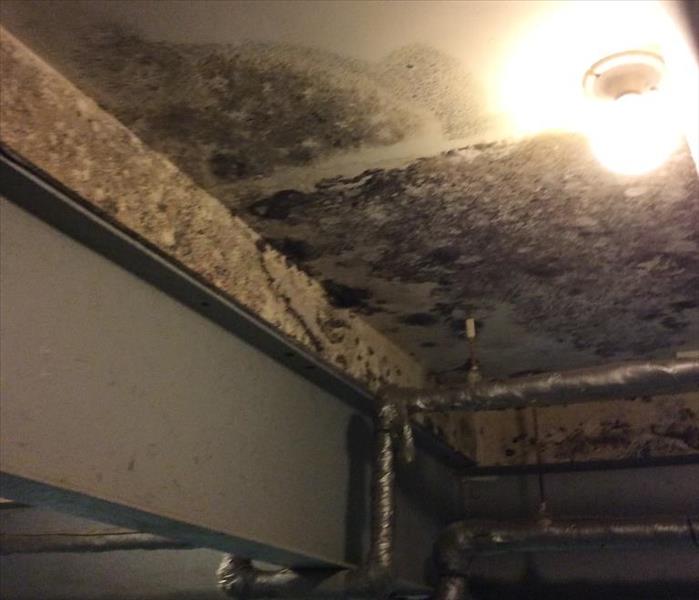Mold Tips & Facts
8/29/2016 (Permalink)
Some customers try to handle the project themselves and find that the mold comes back a few weeks later. Here are some myths & facts about mold and the dangers. Although if you think you have mold, you should contact SERVPRO of Danbury/Ridgefield to discuss the plans of actions.
MYTH NO. 1 BLEACH KILLS MOLD?
Liquid bleach is a solution of chlorine in water, usually 6 percent sodium hypochlorite, thus 94 percent water. Smearing bleach on mold may appear to kill it, but the effect is superficial and very temporary. Once the chlorine is gone - and it evaporates rapidly - what's left is all that water, feeding the mold.
There are many chemicals that kill mold. They're called biocides. That means they kill life. (Bio = life + cide = kill.)
MYTH No. 2 'Toxic' Mold is the only dangerous type of mold.
"Toxic" mold or "black" mold is often touted by the hucksters in the mold industry as being the one that makes people sick, the one you must eliminate. This is pure scare tactic.
Yes, there are some strains of mold that seem to be more toxic than others. But there is no such thing as good mold, or even tolerable mold, unless you like stinky cheese. Mold in your home is a problem, because it signifies a moisture problem. Moisture inside your home enables mold growth, and it can also lead to rot, threatening the structure itself.
On top of that, any mold problem that's allowed to continue often will pave the way for the dreaded "black mold." The most infamous "black mold," stachybotrys chartarum, is what's known as a tertiary mold. It's very slow to develop and usually follows earlier mold growths, actually feeding off the previous mold colony.
MYTH No. 3, Homeowners can property remediate mold themselves?
Homeowners are not trained or knowledgeable about mold enough to properly remediate the damages, most times homeowners cause more damage when they don’t hire a professional. Most of the errors are in the contamination process. Not using vapor barriers or the proper equipment to clean the air during removal stages. When it’s not properly sectioned off, they can cross contaminate mold threw other area of the home that previously did not have mold spores.
Fact No. 1 : Mold is everywhere and mold problems exist indoors in every climate.
Mold is, literally, everywhere on the planet, in every climate. A house in the Mojave Desert can have a mold problem as easily as one in Florida or New Orleans.
Mold needs three things to thrive: moisture, food, and the right temperature. Moisture can collect in walls, attics and crawl spaces in the driest of climates with a little help, such as a roof or siding leak, plumbing flaw, and pressure differentials created by air conditioning, or even a poorly vented bathroom.
Food for mold is pretty much everything we build with and everything we own. Mold loves household dust... even in the kitchen sink. And the warmth mold needs is the same temperature range humans prefer.
Bottom line: Every home has mold but not every home has a mold problem. If you think you might have a mold problem, don't ignore it. Get help.






 24/7 Emergency Service
24/7 Emergency Service
